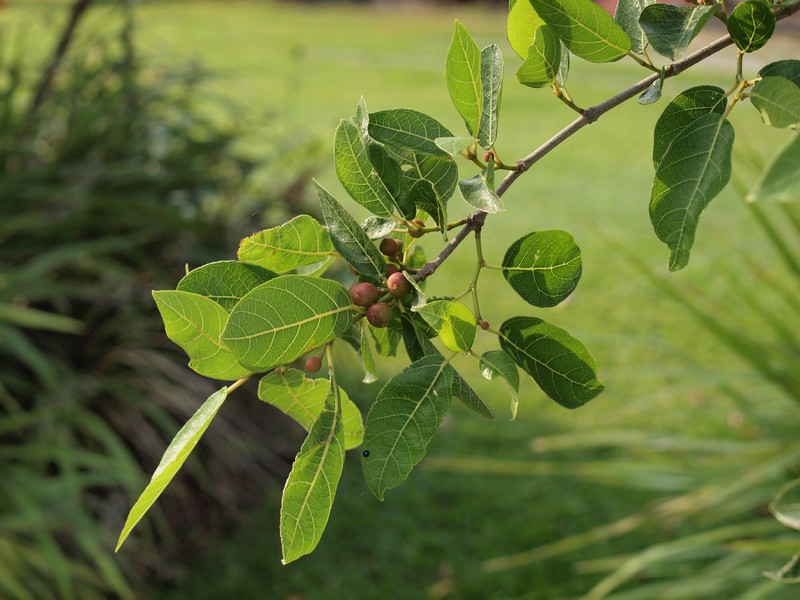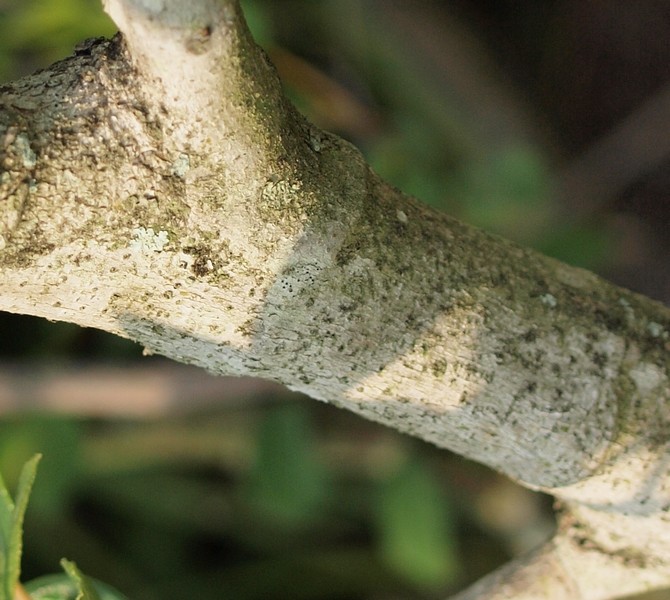Sandpaper fig
Ficus opposita, Fam. Moraceae








A small to medium sized, semi-deciduous tree with a rounded, fairly dense crown. All parts exudes milky sap. Aborigines used the leaves for medicinal purposes and as sandpaper.
| Weed Category: | |
| Weed: | No |
| Form or habit: | Small tree, Med tree |
| Family: | Moraceae |
| Leaf: | Simple Opposite Simple, mostly opposite but sometimes alternate, entire or toothed, rounded or bluntly pointed at the apex, 45-160 x 40-90mm; upperside sandpapery, underside softly hairy. Juvenile leaves are variable in size and shape. The leaf stalks are 5-30mm long; stipules 4-15mm long. |
| Flower conspicuous: | Inconspicuous |
| Flower colour: | |
| Flower description: | Tiny flowers are contained inside the cavity of the fig. Separate male and female plants. A small opening provides access, usually to one specific species of wasp, in which the female lays her eggs. Newly hatched wasps typically pollinate the figs as they travel to different fruit upon dispersal. |
| Fruit conspicuous: | Conspicuous |
| Fruit colour: |
Brown, Red |
| Fruit: | Fleshy |
| Fruit description: | Ripe figs that reach maturity at various times throughout the year, are fleshy, globular, reddish brown, about 1-2cm in diameter and are borne on stalks in leaf axils. |
| Habitat: | Beach scrub, gallery (riverine or riparian) forest, littoral rainforest, open forest, rainforest, woodland. |
| Distribution | Queensland and the Northern Territory. |
| Food source for: | The edible fruits are eaten by many birds. The leaves are a larval food for species of moths and butterflies. |
| Toxicity: | No toxicity known |
| Origin: | Australia |
| Notes: | |
| Information sources: | Melzer R. & Plumb J. (2007) Plants of Capricornia. |